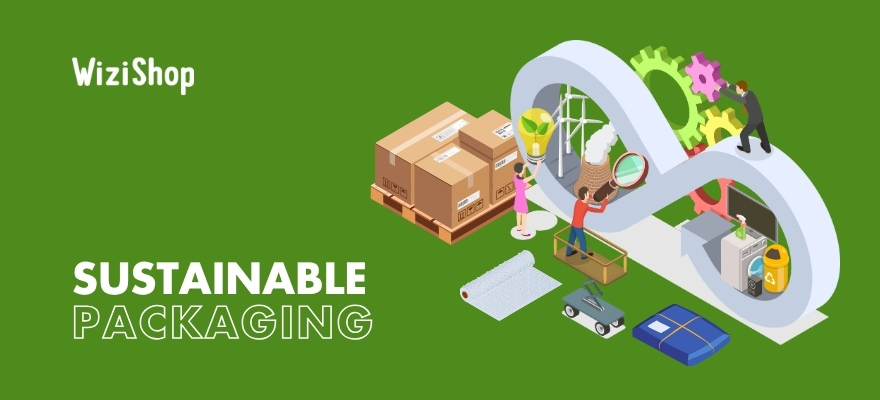Key points in this article:
- Sustainable packaging uses eco-friendly materials and design practices that reduce environmental impact throughout the packaging’s entire life cycle while still ensuring product protection.
- It’s crucial for online retailers because sustainable packaging lowers waste and carbon emissions, boosting brand reputation with eco-conscious consumers.
- Examples include recyclable, compostable, biodegradable, reusable, minimalist (reduced material), and recycled-content packaging.
- There are various steps involved in implementing a sustainable packaging strategy, starting with evaluating your current packaging.
- Sustaining packaging efforts means treating them as an ongoing process: measure metrics, explore new materials, engage customers with recycling instructions or take-back programs, and keep refining.
In a time when many people’s buying habits are trending towards more conscious consumption, ecommerce companies around the world are looking to how they can accommodate this increasingly common consumer behavior.
Besides brainstorming eco-friendly products to sell, another way to go green with your online store is to opt for sustainable packaging.
Implementing sustainable packaging for your own ecommerce business is a journey that goes beyond protection and convenience. It aims to create a harmonious balance between human needs and the well-being of our planet.
In this article, we tell you all about what sustainable packaging is, why it’s important in this day and age, the different types of sustainable packaging that exist, and how to develop your own strategy to boost your packaging’s sustainability.
What is sustainable packaging?

Photo by Kaboompics.com
Sustainable packaging refers to the use of materials and design practices that minimize the environmental effects of packaging throughout its life cycle. This includes sourcing eco-friendly materials, reducing waste, optimizing production processes, and ensuring recyclability or biodegradability.
The goal is to create packaging that has a lower environmental footprint.
Whether companies ship their goods in boxes, bags, or other containers, they must consider factors like resource use, energy consumption, and waste generation if they want to make their packaging more sustainable.
Sustainable packaging aims to balance the need for product protection with environmental responsibility, contributing to long-term ecological and social well-being.
Why is sustainable packaging important in ecommerce in 2026?
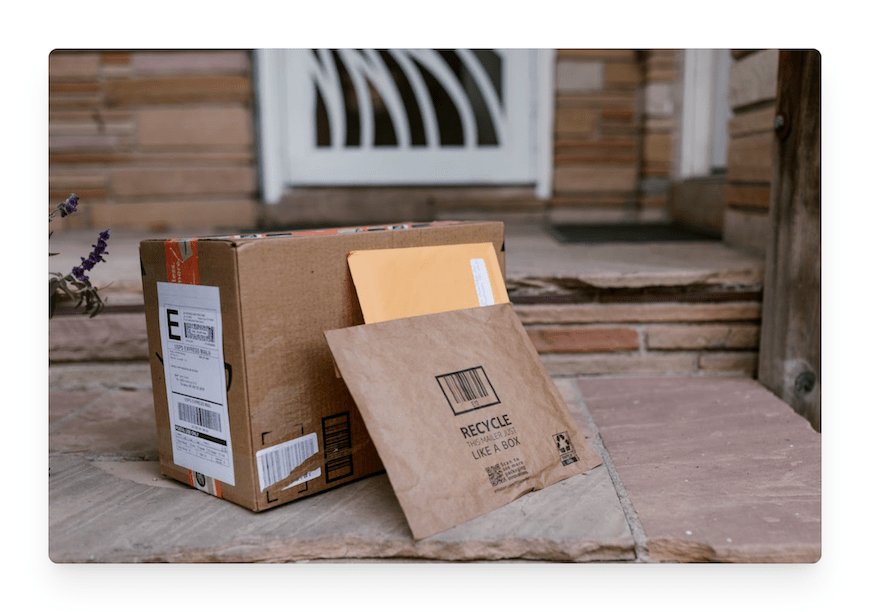
Photo by RDNE Stock project
Online retailers should prioritize sustainable packaging for both environmental and business reasons.
Eco-friendly ecommerce packaging reduces the ecological footprint by minimizing waste, conserving resources, and lowering carbon emissions associated with production and disposal.
Consumers increasingly value sustainability, and using eco-friendly packaging enhances a company's reputation and attracts environmentally conscious customers.
For example, in a 2022 Statista study of online shoppers in the US, 25% of respondents stated that sustainable packaging was a packaging factor that made them want to buy from an online store.
Moreover, as governments and regulatory bodies focus on environmental issues, adopting sustainable practices can preemptively address potential regulations and demonstrate corporate responsibility.
From a business perspective, sustainable packaging can also lower the costs to ship items and contribute to operational efficiency.
Embracing eco-friendly packaging aligns with the global shift toward sustainability, fostering a positive brand image, meeting consumer expectations, and ensuring long-term competitiveness in the evolving retail landscape.
Types of sustainable packaging
As businesses and consumers seek eco-friendly alternatives, sustainable packaging has become an essential part of reducing waste and protecting the planet.
From recyclable and compostable options to reusable and recycled-content solutions, there are many innovative approaches that balance functionality with environmental responsibility.L
Recyclable packaging
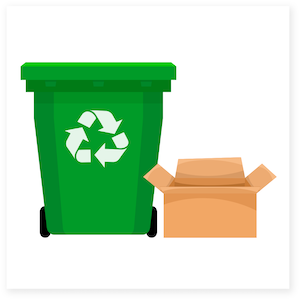
Recyclable packaging is designed to be collected, processed, and reused in new products after its initial use. Common materials include paper, cardboard, glass, aluminum, and certain plastics like polyethylene terephthalate (PET).
This type of packaging reduces waste by keeping materials in circulation and lowering the demand for virgin resources. To be effective, it must be clean and disposed of correctly in existing recycling systems.
Compostable packaging
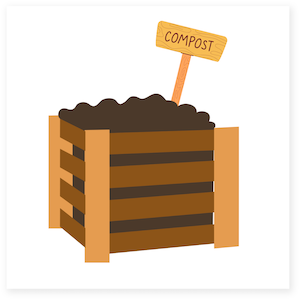
Compostable packaging is crafted from natural materials like cornstarch, sugarcane, or plant-based polymers that break down into nutrient-rich soil under specific conditions.
Unlike traditional plastics, it leaves no toxic residue and supports a circular economy by turning waste into a resource. It’s ideal for foodservice items like cups, utensils, or takeout containers but typically requires industrial composting facilities for proper disposal.
Biodegradable packaging

Biodegradable packaging is designed to break down naturally with the aid of microorganisms over time, reducing long-term pollution. Possible materials used here are plant-based plastics, paper, or organic fibers.
While all compostable packaging is biodegradable, not all biodegradable packaging is compostable—some may take years to degrade or leave behind residues if not properly managed. It’s most effective when supported by waste systems that encourage decomposition.
Reusable packaging
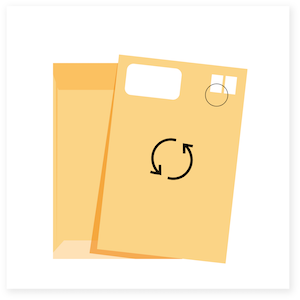
Reusable packaging is built to last through multiple uses, cutting down on single-use waste. Examples include glass jars, metal tins, cloth bags, or durable plastic containers.
Businesses may offer return-and-refill systems, particularly in food, beverage, and personal care industries. This approach not only reduces environmental impact but also fosters customer loyalty by encouraging sustainable habits and creating long-term value through repeat use.
Minimalist (reduced) packaging

Minimalist packaging focuses on reducing material use altogether, using only what’s necessary to protect the product. It often involves lighter designs, smaller boxes, and fewer layers.
By cutting excess, companies save costs, reduce shipping emissions, and appeal to eco-conscious consumers. Minimalist packaging works well for ecommerce, electronics, and consumer goods, balancing functionality with sustainability while still delivering a polished and professional brand experience.
Recycled-content packaging

Recycled-content packaging is made from materials that have already been used and processed, such as post-consumer paper, cardboard, plastics, or metals. By reintroducing these materials into new packaging, companies reduce the need for virgin resources and lower overall environmental impact.
This approach supports a circular economy, conserves energy, and often appeals to eco-conscious consumers. It’s commonly used in shipping boxes, paper bags, and molded protective packaging.
How to implement your sustainable packaging strategy in 7 steps
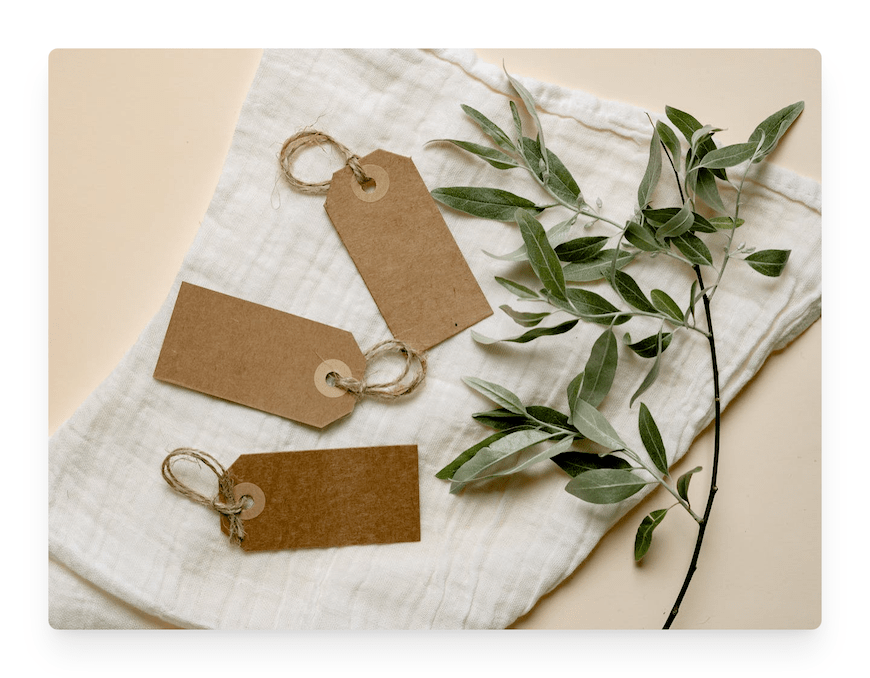
Photo by Polina
Whether you're preparing to launch a new online store or want to improve the sustainability of your existing venture, your packaging is a great place to start when it comes to achieving a sustainable business model in ecommerce.
Here’s how to create a top-notch sustainable packaging strategy step by step and reduce harm to the environment.
1. Evaluate your current packaging
The first critical step in creating a sustainable packaging strategy is taking a close look at where you stand with how you’re packaging your products today.
This involves assessing the types of materials you use, how much packaging is required for each product, and whether your choices are recyclable, reusable, or unnecessarily wasteful.
Consider the environmental impact of sourcing, production, and disposal, as well as shipping efficiency—excessive size or weight increases carbon emissions.
Gathering customer feedback can also highlight pain points, such as difficult-to-recycle materials.
By analyzing costs, performance, and sustainability, you’ll identify areas for improvement and create a baseline that guides smarter, eco-friendly packaging decisions moving forward.
2. Explore sustainable alternatives
Next, you’re ready to begin figuring out how you might be able to do better with your ecommerce packaging in terms of sustainability.
Conventional packaging elements like plastic and styrofoam are giving way to substitutes such as recycled paper, cardboard, plant-based plastics, and compostable materials. These alternatives not only decrease carbon footprints but also foster a circular economy, completing the cycle through recycling and composting initiatives.
Fortunately, there are numerous eco-friendly packaging options to consider for your online store's orders:
- Recycled materials: Choose packaging made from recycled content, such as recycled cardboard or paper. This reduces the demand for new raw materials.
- Biodegradable materials: Opt for packaging that breaks down naturally, lessening negative repercussions for the planet. Materials like cornstarch-based plastics are examples of biodegradable options.
- Compostable packaging: Compostable materials can be broken down in a composting environment, contributing to nutrient-rich soil rather than adding to landfill waste.
- FSC-certified paper: Select packaging materials certified by the Forest Stewardship Council (FSC), indicating responsible forest management practices.
- Water-based Inks: Use inks that are water-based and have lower environmental impact compared to traditional solvent-based inks.
When evaluating different material options, note that you’ll need to consider the products you sell, particularly if your ecommerce site offers food items and/or particularly fragile goods.
The materials used must be able to keep the package’s contents protected, and there’s the additional requirement of ensuring that you use food-safe materials for any food-related items.
3. Simplify your packaging
For many online shoppers, unboxing their orders once they receive them is an essential part of the overall customer experience and can influence whether they continue to buy from a company in the future.
Products carefully wrapped in colorful tissue paper, bubble wrap, and/or a plastic zippered pouch and then placed in cardboard boxes filled with plastic packing peanuts plus free goodies galore can all help to make the unboxing experience enjoyable for your customers.
However, using excessive materials to package isn’t a must to make buyers happy. Statista’s 2022 survey of online shoppers based in the UK and the US determined that 64% of respondents agreed with the idea that brands should cut back on the amount of packaging they use.
Many commonly used packaging elements aren’t really needed to safely get your orders from Point A to Point B and will likely end up sitting in the landfill. It can therefore be a good idea to opt for a minimalist approach with your packaging, striking the right balance between delighting your customers and avoiding waste.
Consider streamlining packaging design to use fewer materials. Avoid excess layers and unnecessary components, focusing on simplicity.
If going the minimalist route isn’t for you, think about how you might be able to at least reduce the packaging for your products. Right-size packaging to minimize material usage and transportation space, reducing both costs and environmental impact.
4. Work with logistics experts
Logistics providers bring deep knowledge of supply chains, shipping methods, and packaging efficiencies that can help reduce both environmental impact and operational costs.
By collaborating with these experts, businesses can identify packaging solutions that optimize space, minimize weight, and protect products during transit, which reduces waste and carbon emissions.
They can also advise on eco-friendly materials, recycling programs, and compliance with regional sustainability regulations.
Furthermore, logistics partners often have access to innovative technologies, such as route optimization and carbon tracking, which further enhance sustainability.
This collaboration ensures your packaging strategy is practical, scalable, and aligned with broader green initiatives across the supply chain.
5. Start with pilot tests
Yes, striving for full-on eco-friendliness is admirable and a great goal to have.
However, if you go all out from the get-go, stocking up on lots of new packaging materials, only to find out that they aren’t the best fit for your products, this can mean a significant waste in terms of money and supplies, leading to the opposite of what you hoped to achieve with your green initiative!
Regardless if your company sells a single product or a few hundred items, it’s advisable not to fully embrace packaging sustainability without testing the concept first. This can be achieved by sampling various packaging options and containers.
Ordering a sample pack allows you to personally assess the quality of the packaging. Once you are confident that it’s a viable option for your business, you can proceed to placing larger orders.
6. Buy in bulk
Buying in bulk is a practical way to make your ecommerce packaging strategy more sustainable.
Ordering packaging materials in larger quantities reduces the frequency of shipments from suppliers, which helps cut down on transportation-related emissions and packaging waste from multiple deliveries. It often lowers costs per unit, making eco-friendly materials more financially viable.
Bulk purchasing also ensures consistency in packaging quality and design, which strengthens brand presentation while minimizing last-minute, less sustainable alternatives.
7. Commit to continuous improvement
Once you have a great sustainable packaging strategy in place, you may think that your work is done…
To truly succeed over the long term with your efforts, however, you’ll need to always keep an eye on the effectiveness of your packaging regarding sustainability and always remain committed to improving.
Committing to continuous improvement ensures your ecommerce packaging strategy keeps pace with evolving expectations, regulations, and innovations in sustainability.
Rather than viewing packaging as a one-time project, treat it as an ongoing process of refinement. Some ways to do this include the following:
- Tracking key metrics such as material usage per order or the percentage of recyclable content.
- Exploring new materials as eco-friendly innovations become available.
- Engaging customers with recycling instructions or take-back programs.
- Testing new designs or smaller packaging sizes to reduce waste.
- Collaborating with suppliers who prioritize sustainable practices.
Consistently seeking improvements will help ensure that your business remains adaptable, cost-effective, and aligned with long-term environmental goals.
Sustainable packaging FAQ
Can eco-friendly packaging still protect fragile products during shipping?
Yes! Many sustainable options, such as corrugated cardboard, molded pulp, biodegradable packing peanuts, and recyclable paper cushioning, are designed to provide the same durability and shock absorption as traditional materials. When chosen and applied correctly, these alternatives safeguard items while reducing environmental impact.
How do I communicate my packaging efforts to customers?
Let your customers know what you’re doing to make your packaging sustainable by clearly highlighting them on your website, product pages, and shipping materials, explaining how they reduce environmental impact. Sharing stories through social media, emails, or inserts in packages also helps educate customers and reinforces your commitment to sustainability.


